SAMAPALU
Dr. MOHAN CHANDRAGUTTI
Prasaranga, the Publication division of Kuvempu University was established in 1992 to disseminate knowledge generated at the University and also to publish important works from researchers and intellectuals from Karnataka. Prasaranga has published over 100 books and publishes journal of social science, journal of science, journal of management and commerce, journal of literature and languages. Regular events are conducted at the Universiy and outreach programmes at colleges, schools and Insitutions.
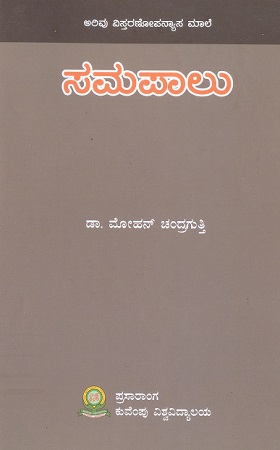
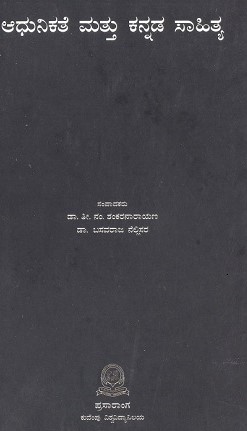
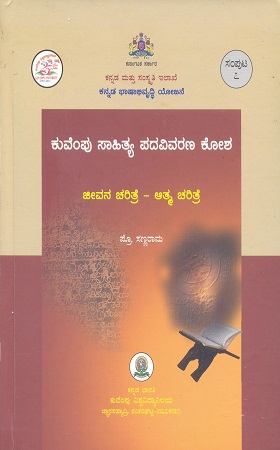
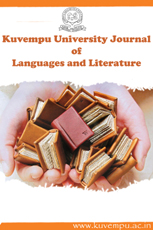 Language and Literature
Language and Literature| Name | Working Designation | Designation |
|---|---|---|
| Prof. Rajendra Chenni | Professor, Department of English, Kuvempu University | Chief Editor |
| Dr. Rachel K. Bari | Professor, Department of English, Kuvempu University | Member |
| Dr. K. Keshava Sharma | Professor, Department of Kannada, Kuvempu University | Member |
| Dr. Prashantha Nayaka G | Professor, Department of Kannada, Kuvempu University | Member |
| Dr. Ramprasad B V | Associate Professor, Department of English, Kuvempu University | Member |
| Dr. Uma Hegde | Professor, Department of Hindi, Kuvempu University | Member |
| Dr. N.S. Gundur | Professor, Department of English, Tumkur University | Advisory Committee |
| Dr. Chitra Panikar | Professor, Department of English, Bangalore University | Advisory Committee |
Volume : I Issue : 1 September 2017 | ||

The present paper intends to explore that how caste hegemony played a major role in maintaining ‘social exclusion’ in India and in Karnataka particularly. The modes of social recognition and derecognition models are generally representing through language. This representation obviously becomes as a social reality. This politics of social recognition is always discriminatory and partial. However, language can be taken into consideration in this paper as one of the signifiers for bringing out the different modes of caste hierarchy and social exclusion. The discourse of caste hierarchy and outcaste are not merely signifying the oppressed conditions alone, but they are also the resulted phenomenon of ‘symbolic violence’. Consequently, socio-cultural sufferings and violent practices like untouchability are still prevailing despite of all democratic practices and social movements in India. Peter Burke defines symbolic violence in History and Social Theory is something different from the concept that is being discussed in this paper. According to Burke, “symbolic violence… refers to the imposition of the culture of the ruling class on dominated groups, and especially to the process by which these dominated groups are forced to recognize the ruling culture as legitimate and their own culture as illegitimate” (1993:86). This argument appears to be general and linear at the outset. But as far as the underlying structures are concerned, this argument substantially brings out the semiotic realizations and conditions of caste and caste systems in India. Keeping in mind these objectives, this paper investigates thoroughly the socio-cultural conditions of social exclusion and caste hegemony, specifically in Karnataka. It is true, social exclusion and caste hegemony have been the crucial topics in the human history. For this reason, Instead of, rehearsing the old debates that have been circulated across the time and space, but trying to put them in a new order and perspectives. And also it is necessary to understand their impacting dimensions through semiotics.

Tamil women poets have been prolific writers and have emerged as the articulation of an Indian voice. They have assimilated the Tamil poetic tradition. But they have also met with stiff opposition for the social space has always excluded women from any form of sexual dialogue. Another reason was that Tamil women’s poetry was totally opposed to the powerful and dominant voice of Tamil nationalism. Kutti Revathi has an interesting quote “ Just as the body belongs to man, so do the words that denote the parts thereof… So, too, is the exclusion of women from poetry And where her entry is permitted, such permission is granted only on condition that her poetry must subject itself to self-censorship.

Wife: The trouble with you Brian is that you have no sense of humour Man: (After thinking about it for moment) Well, I don’t think that’s funny. Is it true that some people don’t have a sense of humour? What is humour? From where does it arise? If we look at the origin of the idea of the comic we would know how subversive the wife is being. Two odd millennium years ago the ancient Greeks discovered a very funny anatomical difference between the sexes. Women did not have the hyoid bone found in the region of the throat. They related this to the strength and size of the laugh of the two sexes and found women falling far behind the men. But of course all this changes subsequently when they discovered that the body has fluids that caused changes in the temperaments of individuals. This in today’s parlance comes close to the idea of psychological character, comic being one of them.

This paper deals with two hijra self-narratives from India- I am Vidya by Living Smile Vidya and Truth about Me by A. Revathi, both translated from Tamil to English. The paper argues that in these two self-narratives there is an effort to give a coherent narrative of the lives of the writers in terms of ‘a woman trapped in a man’s body’ framework. The paper also shows how other people try to make sense of the lives of these writers through other narratives. It finally argues that there are many performative aspects in the becoming of a hijra that can be seen in these narratives that escape the coherence ‘a woman trapped in a man’s body’ narrative tries to achieve.

Postcolonial feminist theory’s project can be described as one of interrupting the discourses of postcolonial theory and of liberal Western feminism, while simultaneously refusing the singular “Third World Woman” as the object of study. Rosemary Marangoly George.

Families have histories. They have their own memories and narrative embedded within the psyche of individuals that experience either forced displacement, or migration by choice. These smaller units build to make histories of a larger macrocosm called the nation. The present paper focuses on how memory plays an important role in reconstructing the narrative of partition that emerges from personal histories of individual experience and family units. As the generations are passing away, the people who experienced partition first hand are on the verge of extinction. What remains is second-hand and third-hand information (from the proceeding generations) through the family struggle over years. Largely, a sense of amnesia, forgetting and erasure challenges the articulation of these experiences. As a third-person narrator, belonging to one such family, the researcher would focus on the limitations of articulation and expression of the partition experience and the need to articulate this experience. Radhika Mohanram in an essay “ Specters of Democracy/The Gender of Specters” suggests that there are two types of collective memory “a nationally orchestrated memory that can bring about cohesiveness to a society and one that is open-ended, non-fixed, and non-politicized that can critique and question the former.”
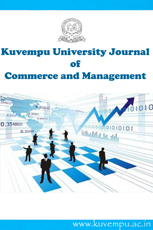 Commerce and Management
Commerce and ManagementIn this age of Commerce, Management, Economics and Computer and cut throat competition, a group of intellects felt the need to have some platform, where young and budding managers and academicians could express their views and discuss the problems among their peers. This journal was conceived with this principled intention in view. The journal keeps readers up-to-date with the latest research and newest thinking in Commerce and Management in an easy-to-read, up-front way This journal has been introduced to give an opportunity for expressing refined and innovative ideas in the field of Commerce and Management. The journal also provided a chance to know about the latest in the sphere of research and knowledge. We have taken a small footstep and we anticipate that with the active co-operation of like-minded scholars, we shall be able to serve the society with our humble efforts. It provides an outlook of research advancements and understandings in the field of commerce and management inclusively and exclusively. It publishes articles, case studies that consider issues regarding Commerce, Management and all corresponding fields. The Journal gives equal priority to all the areas of Commerce and Management like Accounting and Taxation, Marketing, Finance, Production and Operations, Human resources and Systems. In addition to this it gives high priority to the International Business, General Management practices, Research Methods, Entrepreneurship and Small Business Management, Economic and Contemporary issues in Commerce & Management. The prime goal of Commerce and Management journal is to disseminate the ideas and thoughts in this area to academicians, researchers, practitioners and all those who can benefit and contribute to the corporate and society at large. It aims to include paper from all over the country without any discrimination. Papers will be preferred which can be applied at any level and can benefit to stake holders.
| Name | Working Designation | Designation |
|---|---|---|
| Prof. R. Hiremani Naik | Professor, Institute of Management Studies, Kuvempu University,Shankaraghatta,Shivamogga, Karnataka,India-577451. e-mail :hn@kuvempu.ac.in | Chief Editor |
| Prof. J. Madegowda | Professor, Department of Commerce, Kuvempu University,Shankaraghatta,Shivamogga, Karnataka,India-577451. e-mail :madegowda@kuvempu.ac.in | Member |
| Prof. H. N. Ramesh | Professor, Institute of Management Studies, Kuvempu University,Shankaraghatta,Shivamogga, Karnataka,India-577451. e-mail :hnr@kuvempu.ac.in | Member |
| Dr. Kundan Basavaraja | Assistant Professor,Department of Commerce and Management, Sahyadri Commerce College,Shimoga,karnataka,India-577203 | Member |
| Dr.Manjunath K. R. | Assistant Professor, Institute of Management Studies, Kuvempu University,Shankaraghatta,Shivamogga, Karnataka,India-577451. e-mail :krm@kuvempu.ac.in | Member |
| Dr. Mamatha | Assistant Professor, Department of Commerce, Sahyadri Commerce College,Shimoga,karnataka,India-577203. | Advisory Committee |
Volume : I Issue : 1 November 2017 | ||

Knowledge management is about enhancing the use of organizational knowledge through sound practices of KM and organizational learning. KM practices encompass the capture or acquisition of knowledge, its retention and organization, its propagation and reprocess and lastly responsiveness to the new knowledge. The focus of this study was on KM principles and practices that may be in place in the Universities. The present research approach is that KM and its survival principles and tools may help the institutions to improve performance. However, there is uncertainty about whether the use of KM principles and tools can partly solve the institutions approach to improving the quality of education it provides. Hence, the study attempt to identify the level of understanding among the faculties on Knowledge management practices and examines the challenges faced by individual faculties to share knowledge among them in various departments. This article also attempt to tap intend of policies on Knowledge management applications in selected departments in Kuvempu University with perceptive of faculties.

Insurance sector in India in the contemporary market scenario are exposed to number of challenges, it has been a continuous effort from the participants here to embed all such necessary competencies that can help them to be responsive to the dynamics in the market. Changing market structure and customer dynamics are making these markets more volatile in performance. Against an assumption placed that less than 20% of the total Indian Population is covered under insurance sector not many companies here are in a position to report steady growth, and though some have reported growth in absolute value in terms of rate of growth it has been very inconsistent; this most of the times is said be due to the cultural thresholds the conventional side of Indian markets carry and lack of access to customized services to them. Though a number of initiatives have been taken to break the threshold in the market and provide for customize products and service to the customers, the initiatives have not sufficed to meet the objectives. The initiatives taken up by the insurance companies in India towards accomplishing their objective have seen a metamorphic change, they are more away from conventional management practices into contemporary practices and adoption to SHRM practices is one of its kind which is embedding T&D as a key element of strategic formulation. This paper explores how T&D practices taken up by the insurance sectors are providing for strategic competency building and have been successful in realizing their goals. The paper concludes that mere formulation of SHRM practices would not suffice the need but socializing the resources and embedding the strategic intent into very individuals initiatives is what provides for necessary competency building among them – the same is presented inform a model.

FDI is an important tool in the economic development of the nation. Contribution of FDI through financial resources, technology and innovative techniques raises overall productivity of diverse sectors of economy. However the FDI in retail is facing many challenges, due to the unfair competition and ultimately result in large-scale exit of incumbent domestic retailers, especially the small family owned business. Even though they are providing qualitative services to the customer at the same time the domestic firms in the sector is still underdeveloped and in nascent stage. In this paper it is proved that FDI in retail have its own benefits like tackle information with wholesale prices. And also inflow of technical know-how from foreign firms, like warehousing technologies and distribution system, supply chain, helpful to the farmers in eliminating the middlemen and also increase the fraction of the final sales prices that is paid to farmers. Therefore the present study is an effort to critically evaluate the effects of FDI policies in retail industry to its shareholders and also the policy framework of FDI in retailing.

Corporate governance has at its backbone a set of transparent relationships between an institution’s management, its board, shareholders and other stakeholders. It, therefore, needs to take into account a number of aspects such as, enhancement of shareholder value, protection of shareholder rights, composition and role of board of directors, integrity of accounting practices and disclosure norms and internal control system. In a service industry like banking, corporate governance relates to the manner in which the business and affairs of individual banks are directed and managed by their board of directors and senior management. It also provides the structure through which the objectives of the institutions are set, the strategy for attaining them is determined and the performance of the institution is monitored. Virtually every major industrialized country as well as the Organization for Economic Cooperation and Development and the World Bank has made efforts in recent years to refine their views on how large industrial corporations should be organized and governed. Academics in both law and economics have also been intensely focused on corporate governance. Oddly enough, in spite the general focus on this topic, very little attention has been given to the corporate governance of banks.In this backdrop the present study focused on the comparing Corporate Governance Practices in selected private and public sector banks.

In the past twenty years the growing diverse work force in organizations has led scholars to pay increased attention to this issue. Many MSME are making efforts to achieve workforce diversity, which aims to employ workers from different backgrounds to provide tangible and intangible benefits to the organization. Understanding the utilization of workforce diversity helps to establish an organization with a competitive edge. Enterprises will be successful only to the extent that they are able to embrace & encourage work force diversity and Organizational culture is the workplace environment formulated from the interaction of the employees in the workplace. This study explores by reviewing recent literature the increasing influence of the work force diversity and its relationship with organizational culture in MSME. The study finds that different aspect of work diversity has different relationship with culture. Overall workforce diversity and organizational culture enhances better Organization Objectives, Organization Opportunities and Challenges, Internal Environment and Resources, Organization Environment, greater success in marketing, better distribution of economic opportunity & competitive advantage. The study may be useful for the organizations having diverse workforce by managing them effectively for the achievement of organizational goals. This paper analyses the Work force diversity and the need for organizational culture in that can lead to change management and as such ensure a sustainable future for the MSME and it is explores what organizational culture is, why it is important, and how to change an established culture so that it is better aligned with changes in organizational objectives and workforce practices.

The creation of services allows the operation of a system of accounting responsibility. Responsibility accounting is an accounting system that separates revenues and costs in terms of personal responsibility to monitor and evaluate the performance of the organization. Responsibility accounting collects and reports planned and actual accounting information about the inputs and outputs of responsibility centers. It is based on physical information pertaining to inputs and outputs. The resources utilized in an organization are physical in nature like quantities of materials consumed into a common denominator and expressed in monetary terms called costs for the purpose of managerial control. In similar way outputs are based on costs and revenue data. The importance of appropriate responsibility accounting system is needed to keep better management in the organization. This paper evaluates how the responsibility accounting system leads to strengthen management ability of the organization.

This paper concentrates on the potentialities of e-banking services provided by banks in India. Technology today has becomes synonymous with banking and Indian banks have put in place a strong infrastructure to leverages its benefits. Technology has made visible differences in the functioning of banks and conduct of banking operations. Banks today have built up significant database about the customer demographics, transactions and behavioural will have to be separated with substantial focus on information. Most banks are continuously looking for alternative ways of relating to customers, reduce costs, improve efficiencies and differentiate products and services. One trend in this line is the increasing use of self-service technologies. In past, the introduction of e-services allowed access to some banking service on a 24x7 basis. But, recently, more and more banks are relying on the electronic services o push their services to customers.The analysis made with the help of both primary data through structured questionnaire and secondary data through various sources like books, articles and published materials. It concentrates on the advantages, disadvantages and various risks faced by the customers at the time of using electronic services. Finally, it attempts to offer suitable suggestions and conclusions to enhance the potentialities of electronic services provided by banks.

In the present world day by day new technologies are introduced and improved very fast in all fields. Now new technology gifted to tax payers for filing their income tax return through online is E-filing. The E-filing is the new effective method of filing income tax return through online and make E-payment tax. It saves our golden time, energy and cost and also reduces our tension. So the tax payers are required to use E-filing facilities. This study reveals that the existing users are satisfied with the E-filing facilities but most of the individual tax payers are not aware of the E-filing procedures so sufficient steps are required for create more awareness in the minds of tax payers regarding E-filing of income tax.

This paper focuses on relevance of Yoga and little on Physical Exercises in the management of stress. Yoga involves a series of both moving and stationary poses, combined with deep breathing. As well as reducing anxiety and stress, yoga can also improve flexibility, strength, balance, and stamina. Practiced regularly, it can also strengthen the relaxation response in our daily life. Exercise in almost any form can act as a stress reliever. Being active can boost feel good and distract from daily worries. Exercise increases overall health and sense of well-being, which puts more pep in step every day. Virtually any form of exercise, from aerobics to yoga, can act as a stress reliever. The state of the mind and that of the body are intimately related. If the mind is relaxed, the muscles in the body will also be relaxed. Stress produces a state of physical and mental tension. Yoga, developed thousands of years ago, is recognized as a form of mind body medicine. In yoga, physical postures and breathing exercises improve muscle strength, flexibility, blood circulation and oxygen uptakes as well as hormone function. The analysis made with the help of secondary data through books, internet, journals and articles. This paper also cover the concepts like asanas or different types of yoga, health benefits of yoga and effect of Yoga on the body.

The present paper provides a platform to understand the Production, management and operation process of the small scale industry, so in order to collect this information A Researcher has selected Mangalore Cashew Industry, Siddapura. It particularly focused on Benefits of employees about monetary and non-monetary facilities and also collects information about how this particular small scale industry contributes towards economic growth and development and how it acts as a SSI, Finally the detail process and procedures of operation and management in Manglore cashew industry. Therefore, small attempt have been made to understand the benefits of employees as well as to the country i.e. how contribute towards economic development and how the SSIs plays an important role in economic development today. The structured interview conducted to the employees in Mangalore Cashew Industry Siddapura and the data collected will be arranged properly for the findings. It concentrates on the new emerging challenges, opportunities and issues in the field of Economics. Finally, it makes an attempt to offer suggestions to analyze the Management and operation process in SSIs.

Smart city one of the impressive and progressive project initiated by the central government of India, according to this initiative every small cities including small villages should be well equipped with all the facilities and it should be equal to developed cities of the country. The main objective of this initiative is to ensure gradual development of all the cities in the country with proper facilities. This study focuses on some of the important objectives which will elucidate economic development of the country through smart cities proposals.

Hospitality Management is an important concept in the present business era. Hospitality Management is a service industry, which gives services to various kinds of customers. Hospitality Industry involves Tourism Management, Hotel Management, and Event Management. With a degree of Hospitality Management there are many career options like, Master of Tourism Administration (MTA), Master of Hotel Management (MHM), Flight Steeword Course (For Air Hostess and Cabin Crew). Hospitality Management plays an important role to make their customers happy by providing good services.

Goods and Service Tax or GST as it is known is all set to be a game changer for the Indian economy. The Finance Minister in his budget speechof Budget 2015 has announced time and again that the tax will be introduced on 1 April, 2016. VAT or Value Added Tax was first introduced in France somewhere in 1954. The concept of VAT is applying a tax only on the value added by each person at each stage; by allowing the person input credit of taxes paid upto his stage ofprocurement. Thus the tax is expected to reduce the concept of ‘tax on tax’, increase the gross domestic product of the economy and reduce prices. Overall it is known to be beneficial to both the consumer, business and the Government. In India, there are different indirect taxes applied on goods and services by central and state government. GST is intended to include all these taxes into one tax with seamless ITC and charged on both goods and services.The implementation of GST will help create Indian market and reduce the cascading effect of tax on the cost of goods and services. It will impact tax structure, tax incidence, tax computation, utilization and reporting, leading to a complete overhaul of the current indirect tax system. For this, GST will have 3 parts – CGST, SGST and IGST. The central taxes like excise duty will be subsumed into CGST and state taxes like VAT into SGST. For the introduction of GST in the above form, the Government needs to get the Constitution Amendment Bill passed so that the proposed objective of subsuming all taxes and allowing states to tax subjects in Union list and vice versa is achieved. Without these powers it is not legally possible to move towards GST. Thus going forward on all transactions of both goods and services, only one tax will apply which is GST comprising of CGST and SGST. IGST would be applied instead of SGST for interstate transactions. Input credit of all these taxes willbe available against all the respective outputs.

The business organizations are attaching great importance to human resource because human resources are the biggest source of competitive advantage and has the capability of converting all the other resources in to product/service. The effective performance of this human resource depends on the type of HRD climate that prevails in the organization, if it is good than the employee’s performance will be high but if it is average or poor then the performance will be low. The study of HRD climate is very important for all the organization and the banking sector is not an exception, especially in the present situation of financial recession. The present study is an attempt to find out the type of HRD climate that is prevailing in public sector banks in Bangalore. The researcher has also tried to find out the difference in the perception of employees regarding HRD climate on the basis of age, gender, designation, qualification. The researcher collected the data from the employees of selected public sector banks using structured HRD climate questionnaire .The data were analyzed using several statistical tools such as mean, standard deviation, percentiles, Z test. The result shown that the HRD climate in public sector banks is average and the perception of employees regarding the HRD climate do not differs significantly on the basis of gender, qualification and designation but it differs significantly on the basis of age . The paper ends by offering useful suggestions to the management involved in the operations of the banks.

The present paper provides a platform to understand the role of Self help groups in rural women empowerment. The progress of any country is considered to be an integrated process of development in all aspects. It includes economic, social and environmental development. The economic progress is a prelude of social development. Of the 1.3 billion people who live in absolute poverty around the globe, 70 percent are women. Swami Vivekananda said, “As a bird cannot fly on one wing, no society can make progress unless its women to join in all activities” and it is quite relevant even today with reference to India. In the recent past, the empowerment theme runs strongly through all the third world Countries, especially in the context of women. Most of the modern democracies and developing nations have a public agenda for the process of empowerment of women. There is a need of creating awareness, enabling women to cross all social and economic barriers, to get equality of status in democratic, economic, social and cultural spheres of life, to empower women to work together with men as equals in all respect and to promote and ensure the human rights of women at all stages of their life cycle. Government has been launching and implementing various programmes for the women empowerment and development focusing rural areas. One of theprogrammes is women empowerment through SHGs. It is indispensable to understand the women development and their empowerment through SHGs in rural areas, where a large number of poor women population needs development and empowerment. Therefore, the researcher has made an attempt to analyze the Empowerment of Women through SHGs in rural areas.

Retail industry is one of the pillars of Indian economy with its huge opportunities. Retail industry is the largest in India, with an employment of around 8% and contributing to over 10% of the country's GDP. The Indian retail industry can be divided in to two parts i.e. organized and unorganized sectors. Organized sector retailing refers to trading activities undertaken by licensed retailers i.e. those who are registered for sales tax, income tax etc. These include the corporate-backed hypermarkets and retail chains, and also the privately owned large retail businesses. Unorganized retailing, on the other hand, refers to the traditional formats of low-cost retailing, for example, the local kirana shops, owner manned general stores, paan/beedi shops, convenience stores, hand cart and pavement vendors etc. in the recent past the organized retail sector in India is experiencing its transformation. Customers are preferred to shop at organized retail shops due to increased disposable income, changing life styles and quality of services offered by the retailers. Therefore the present stud is an attempt to identify factors influencing customer satisfaction which will boost the development in the sector.
